Routers used to be scary things when I was inducted into PCs back in the 80′s and 90′s. Fearsome contraptions, they required ports be opened and closed, and for some strange reason could never work without having to resolve some conflict or other. Those days are long gone, thankfully. Over the last decade, routers became not just normal, but required, as everyone has multiple devices that go online all the time, and pretty much stay online. And while even the cheapest router can be set up in minutes now, the differentiation lies in quality, speed, and features. Plus it’s sort of an annoyance having a separate modem and router, adding to clutter.
Enter the new DSL-N55U from ASUS. This is a modem and router in one, which is great but no big news in its own right. The crux of the DSL-N55U is that it packs A LOT of features on one connectivity device, and that it’s fast. It may not be the most budget offering out there, but for your money you get a major upgrade of your networking capabilities.
To begin with, this is a very light, sleek, and stylish networking device, inheriting the “black diamond” texture previously witnessed in ASUS routers such as the RT-N56U. Cosmetics aside, the interior is of more interest, as the DSL-N55U utilises two dedicated CPUs, one for wired ADSL, and another for Wi-Fi. It also has 128MB of system RAM, giving it more processing power and reducing connection-sapping phenomena such as packet loss and signal bleed. Of course the DSL-N55U on its own can’t make your internet connection exceed what your ISP gives you, but it can certainly help you make the most of that pipeline with this dedicated hardware design.
Your also get three antennas, which unlike the cheapo routers are detachable. That means if for whatever reason you don’t need all that transmission power, you can only plug in one or two. Plus it opens up the possibility of an antenna upgrade further down the line (no pun intended).
The DSL-N55U is also a dual band device, working simultaneously in 2.4GHz and 5GHz, so it allows for more concurrent data sessions and can sustain fast background downloading with less slowdown of stuff like content streaming or online gaming. Each band can take up to 300Mbps, or a combined 600Mbps for the whole device, hence the Gigabit N600 designation on the box.
On the back you will also find two USB ports, which tie into the ability to transform the DSL-N55U into a printer/scanner server, as well as file server. If you have more than one device requiring printing services, the DSL-N55U is your friend with easy sharing. And like all ASUS networking products, it comes with easy auto setup and connection detection. There is a manual and a disc in the box, but you don’t need them. Plug the DSL-N55 to the power, hook it up to the ADSL from the wall, LAN to almost any computing device, open up a browser, and it automatically goes to the router setup page to detect your ISP settings. In less than five minutes, you have a very powerful network all sorted.
I also like the fact that ASUS tests this thing for up to 4000 volt power surges, making it virtually lightning-proof. Quite useful if you live in a stormy place or on the planet Venus. Anyway, the stronger the better – modem routers are left on non-stop, so they need to be rugged and durable.
The photos I snapped tell us more. The box is nice and simple, highlighting the key features of the device front and back.
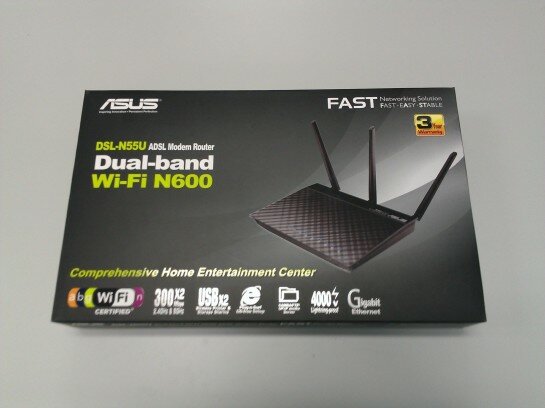
Let your Wi-Fi reach further than ever before!
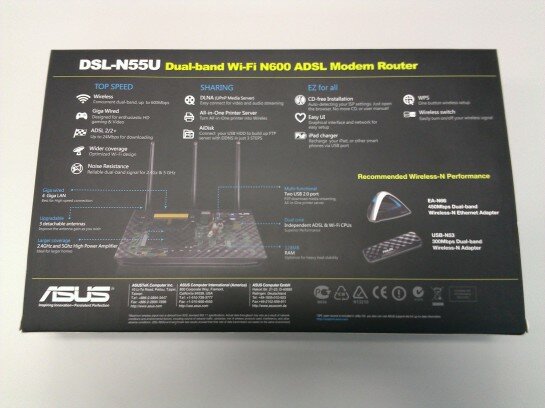
One instance in life where even the flip side looks good
Inside the box we get the usual ASUS attention to packaging, ensuring nothing gets banged around during shipping.
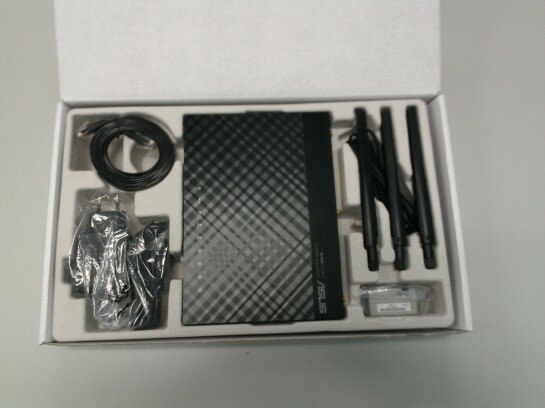
Mere moments away from network domination
I love the look of this modem router, compared to the usually plain looks of most networking devices.
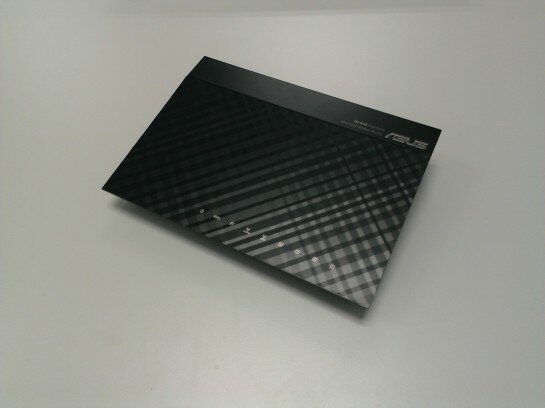
Even offline this thing looks great - and reminds me of a Spectrum computer, don't ask me why!
The antennas attach very easily, all three take a few seconds to screw on.
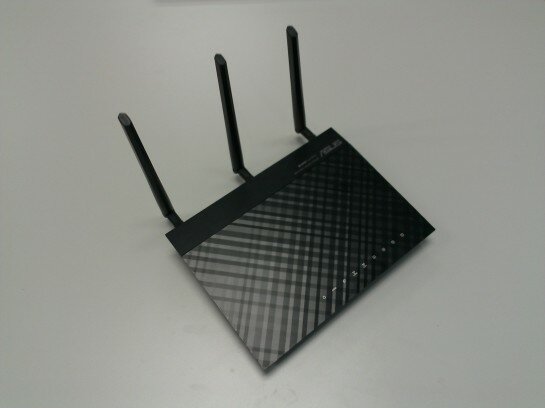
All hooked up and ready to go
Up close we can see more of the “black diamond” texture, which looks really nice.
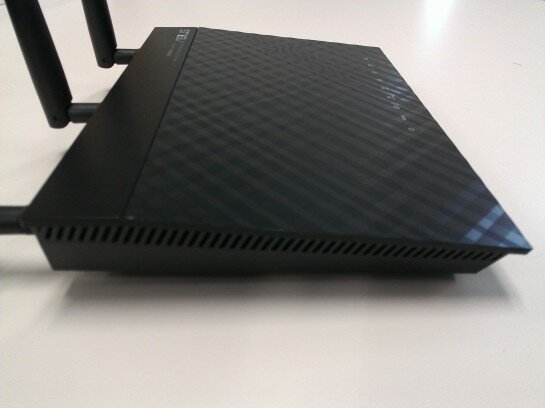
Artistic routers...who'd have thought!
On the back there’s everything you need, including the requisite four LAN ports and the highlight – two USB ports.
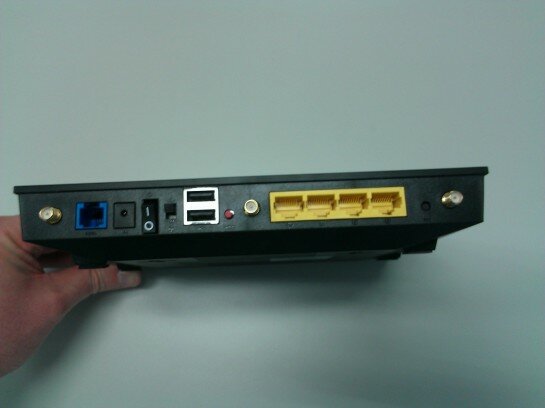
Colour coded for your high speed convenience
Almost forgot the accessories – there’s not a lot, but you don’t need much to get going. An ADSL cable (wall to device), a LAN cable (for connecting to a computer, at least for initial setup), power adapter, and splitter.
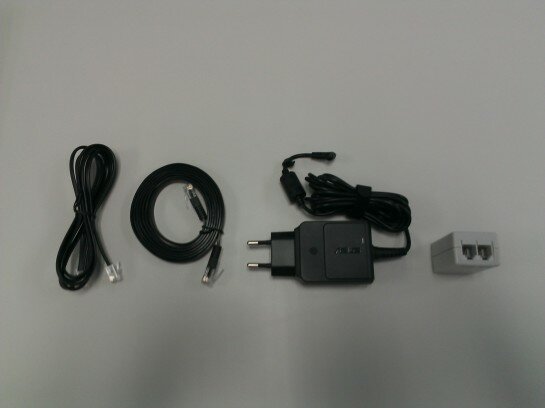
An "All your bandwidth belongs to us" sticker would have been nice to have...
While I certainly understand folks who are budget-conscious and go out and buy a cheap one-antenna 150Mbps modem router (not that I know anyone like that, clearly), once you experience a classy device like the DSL-N55U it’s hard to go back. Look it up if you’re shopping for a network enabler, as it’s hitting shelves near you just about now.


Lee